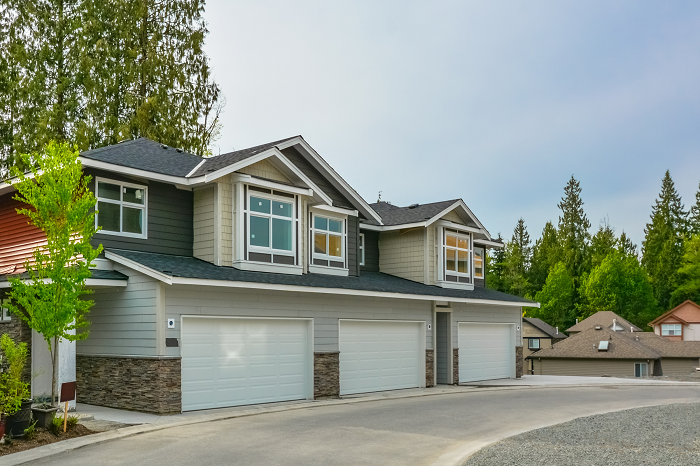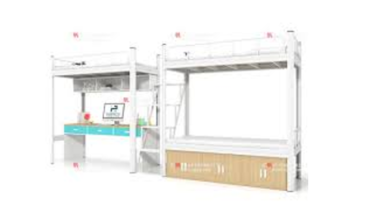Exploring the World of Home Additions

In today’s dynamic housing market, many homeowners are opting to expand and improve their existing properties rather than relocating. One popular way to achieve this is through home additions. Whether it’s creating extra living space, enhancing functionality, or increasing property value, home additions offer a myriad of benefits. In this article, we delve into the world of home additions, exploring everything from planning and design to execution and costs.
Understanding Home Additions
Before diving into the specifics, let’s clarify what home additions entail. Essentially, home additions involve expanding the footprint of a house to accommodate new rooms or features. This can include anything from adding an extra bedroom or bathroom to constructing a new wing or level.
Benefits of Home Additions
Increased Space
One of the primary reasons homeowners opt for additions is to gain more space. Whether your family is growing, or you simply crave more room for leisure and entertainment, home additions provide the solution.
Enhanced Functionality
Beyond mere square footage, home additions can significantly improve the functionality of your living space. From creating dedicated areas for specific activities to optimizing flow and layout, additions can tailor your home to better suit your lifestyle.
Boosting Property Value
Investing in home additions is not just about immediate gratification; it’s also a savvy financial move. Well-planned and executed additions can substantially increase the resale value of your property, offering a high return on investment.
Factors to Consider Before Starting Home Additions
Before embarking on a home addition project, there are several crucial factors to consider.
Budget
Establishing a realistic budget is paramount. Assess your financial commitment to the project and distribute funds accordingly based on your determined budget.
Permits and Regulations
Ensure you’re familiar with local building codes and regulations regarding home additions. It’s imperative to secure the required permits to prevent any potential legal complications in the future.
Design and Aesthetics
Think carefully about the design and aesthetics of your addition. It should seamlessly integrate with the existing structure while reflecting your personal style and preferences.
Popular Home Addition Ideas
The possibilities for home additions are virtually limitless, but some ideas are particularly popular among homeowners.
Kitchen Expansion
A larger kitchen is a coveted feature for many homeowners. Whether you’re a culinary enthusiast or simply enjoy gathering with family and friends, expanding your kitchen can enhance both functionality and aesthetics.
Adding a Bathroom
Extra bathrooms are always in demand, especially in larger households. Whether it’s a luxurious ensuite or a practical powder room, adding a bathroom can improve convenience and comfort.
Building a Deck or Patio
Outdoor living spaces are increasingly valued for their versatility and entertainment potential. A well-designed deck or patio can extend your living area and provide a perfect spot for relaxation and socializing.
Creating a Home Office or Studio
With remote work becoming more prevalent, home offices are in high demand. Consider converting a spare room or underutilized space into a dedicated workspace or creative studio.
Hiring Professionals for Home Additions
While some homeowners may attempt DIY home additions, hiring professionals is often the wisest choice.
Importance of Hiring Experienced Contractors
Experienced contractors bring expertise, efficiency, and peace of mind to the project. They can navigate challenges, ensure quality craftsmanship, and adhere to timelines and budgets.
Researching and Vetting Contractors
Take the time to research and vet potential contractors thoroughly. Request recommendations, assess past projects, and gather various price estimates prior to finalizing your choice.
Steps Involved in Home Additions
Planning and Design Phase
The careful planning and design stage significantly influence the outcome and success of your project. Collaborate closely with architects and designers to transform your ideas into comprehensive plans and schematics.
Obtaining Necessary Permits
Before breaking ground, secure all required permits and approvals from local authorities. Failure to do so can result in costly delays and legal issues.
Construction Phase
Once permits are in hand, construction can commence. Depending on the scope of your project, this may involve excavation, framing, roofing, electrical and plumbing work, and finishing touches.
Final Touches and Inspections
As the project draws to a close, pay attention to the final details and refinements. This includes painting, flooring, fixtures, and landscaping. Don’t forget to schedule final inspections to ensure everything meets building codes and standards.
Tips for a Successful Home Addition Project
Clear Communication with Contractors
Clear and consistent communication plays a vital role in preventing misunderstandings and project delays. Ensure ongoing dialogue with your contractors to facilitate a smooth workflow.
Regular Progress Check-Ins
Stay informed about the progress of your project by scheduling regular check-ins with your contractor. This allows you to address any issues promptly and make adjustments as needed.
Flexibility and Adaptation
Home addition projects rarely go exactly as planned. Stay flexible and be prepared to adapt to unexpected challenges or changes in circumstances.
Costs Involved in Home Additions
The cost of home additions can vary widely depending on factors such as size, complexity, materials, and location.
Factors Influencing Costs
Labor costs, materials, permits, and design fees are among the primary cost factors. Additionally, unexpected expenses can arise during construction, so it’s essential to budget accordingly.
Budgeting Tips
To avoid budget overruns, build a contingency fund into your budget to cover unforeseen expenses. Obtain multiple quotes from contractors and suppliers to ensure you’re getting the best value for your money.
Common Challenges Faced During Home Additions
Despite careful planning, home addition projects can encounter various challenges along the way.
Delays and Setbacks
Weather delays, supply shortages, and unforeseen complications can cause delays in construction timelines. It’s essential to build flexibility into your schedule to accommodate such setbacks.
Unforeseen Expenses
Unexpected expenses are par for the course in home addition projects. Having a contingency fund in place can help mitigate the financial impact of these surprises.
Design Changes
As the project progresses, you may decide to make changes to the original design. While flexibility is essential, frequent design changes can disrupt the construction process and lead to additional costs.
Environmental Considerations in Home Additions
In an era of increasing environmental awareness, sustainability is a crucial consideration in home additions.
Sustainable Building Materials
Opt for eco-friendly building materials and practices wherever possible to minimize your environmental footprint.
Energy-Efficient Upgrades
Incorporate energy-efficient features such as insulation, windows, and appliances to reduce energy consumption and lower utility bills.
Future Trends in Home Additions
As technology and lifestyles evolve, so too do trends in home additions.
Smart Home Integration
Integrating smart home technology into your addition can enhance convenience, security, and energy efficiency.
Multi-Generational Living Spaces
With more families opting to live together, multi-generational living spaces are on the rise. Consider incorporating features such as separate living areas or granny flats to accommodate extended family members.
Outdoor Living Enhancements
Outdoor living spaces continue to gain popularity, with homeowners seeking to maximize their enjoyment of outdoor environments. From outdoor kitchens to fire pits, the possibilities for outdoor living enhancements are endless.
Conclusion
Home additions offer a myriad of benefits, from increased space and functionality to enhanced property value. By carefully considering factors such as budget, design, and hiring professionals, homeowners can embark on successful addition projects that transform their living spaces.





